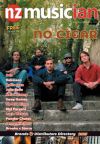X-Factory: dDub is Awake At Dawn
X-Factory: dDub is Awake At Dawn
Welcome to the factory. Have you ever wondered why a CD shop is really divided into sections? Ever wondered who chose the names of the sections? Ever wondered who decided which section a new band goes into? Ever wondered what the differences are between the music in one section, and in another?
The sections could be argued as having no relevance to music whatsoever, only existing to assist you in making a purchase. Okay, conspiracy theories aside, what’s the real difference between, say, alt-punk and punk? Does the existence of two titles like this imply that the two musics are in any way distinct? You might think so, but if you examine typical examples of both genres you will find it difficult to arrive at a musical definition that would stand up in court. Even if you find an element that is unique to one of these; the prosecution will argue that your evidence may be located in 12 other types of rock.
Genres are problematic. We are given to believe that genres are musically distinct when in fact they might not be. Often we assume the pitch and rhythm organisation of a genre to be unique when the production style is what actually makes it unique. Ever wondered why it’s possible to take lessons in ‘rock guitar’ but not in ‘hip hop guitar’? Is there such a thing as ‘hip hop guitar’? Probably not, BUT this is not to say that guitars don’t feature in hip hop, because naturally, they do. So, when someone plays the guitar on a hip hop track or onstage with a hip hop act (less common), what is that guitarist playing? What we might have here is a mix of genres – a hybrid.
This brings me to Auckland band dDub. We have certain preconceptions of dub music, as distinct from reggae and ska, and this commonly rests on a music that has lots of delay effects and frequent breakdowns. Some might define dub purely as a re-mix technique that can be applied to almost any music. Others might conceive of dub purely in the herbal realm. However, it is increasingly common for groups that identify themselves as dub to present a range of musics connected to the traditions of reggae, ska and dub, and this is exactly where dDub are coming from in their album ‘Awake at Dawn’.
The over-riding compositional concept is a focus on primary chords (I – IV – V) in major and minor keys, and vocal phrases often using pentatonic scales. This description can be applied to almost any music, so there’s another piece of the puzzle that’s important: arrangement and instrumentation. Other than the skank and occasional one-drop that makes so much of this music rhythmically symmetrical, the priority is melody.
The intersection of horn section and bass dominates the melodic display of this album, and this could be described as a fundamental stylistic characteristic of this hybrid genre. The weaving bass lines and horn embellishments obviate the potential blandness of the recurring I – V harmonisations. Another strong feature is the vocal dialogue principle, in which backing vocals interact with the lead vocal in a question-and-answer style. I particularly like the “nineteen thousand years old” line in The Flow.
dDub mess with your head by mixing up snatches of other genres. In Comfort we have a ska tempo with a snappy skank, cheeky horn stabs and clipped vocals – it has all the humour of many a Madness or Specials track from 20 years ago. However, in the bridge we get a horn and bass blues lick reminiscent of Supergroove, followed by a syncopated return to the skank and a trombone solo.
The introduction of No Smoke suggests Flamenco guitar and is followed by a trumpet fanfare borrowing from the Mariachi genre. This song also offers some smooth time changes using uneven metre. There are many syncopated pushes from the rhythm section to emphasise the vocal, and also syncopated hits from the entire band that all deflect the driving 4/4 time. Jazz is a major influence in New Zealand dub and evident in the horn solos and some of the chord progressions and voicings (the #11 chord in I See a Sign an obvious one). This further enlarges the hybrid- genre concept in dDub’s music.
Yes, dDub also make frequent use of a delay effect (dubbing out), but there’s so much more to it than that: dDub have saved us from the icy grip of the oncoming winter.
Stephen Small is the coordinator of Popular Music Studies at the University of Auckland. He can be contacted at s.small@auckland.ac.nz
dDub live photo provided by Jason Hailes.

